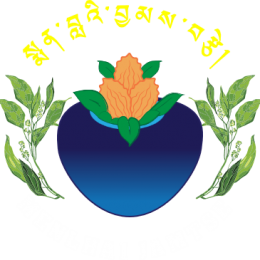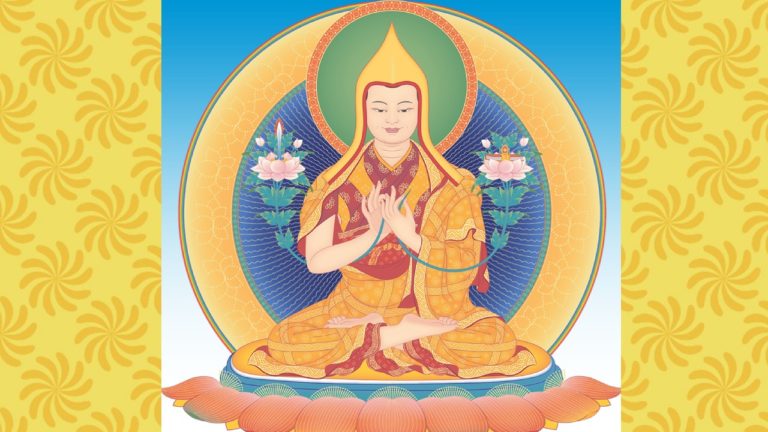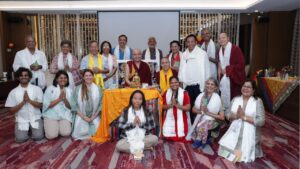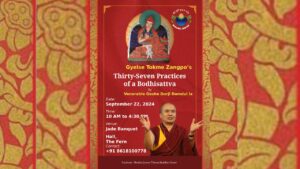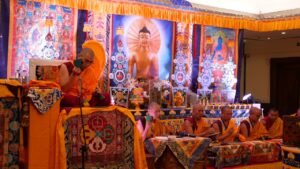Tsongkhapa (1357–1419) is a well-known Tibetan religious philosopher. In his iconic form, wearing a tall yellow hat, he is the center of the Gelugpa (Tib. dge lugs pa) sect that was dominant in Tibet until the Chinese takeover in 1951, and whose de facto leader is the Dalai Lama.
The historical Tsongkhapa flourished in the period immediately following the final redaction of the Buddhist canon in Tibetan translation (Tib. bKa’ ‘gyur, pronounced Kanjur). He propounds a distinctive Middle Way (Sk. madhyamaka, Tib. dbu ma pa) philosophy by differentiating between Candrakīrti’s (fl. ca. 600) correct Consequentialist (Tib. thal ‘gyur pa, Sk. *prāsaṅgika) interpretation of the works of the Indian philosopher Nāgārjuna (third-fourth century), and an incorrect Autonomist (Tib. rang rgyud pa, Sk. *svātantrika) interpretation by Bhāviveka (also known as Bhavya and Bhāvaviveka, fl. ca. 550). He is strongly influenced by the Indo-Tibetan Buddhist logico-epistemological tradition (Sk. pramāṇa, Tib. tshad ma) founded by the Indian epistemologists Dignāga and Dharmakīrti (fifth to seventh century). Tsongkhapa strikes a balance between knowledge and praxis. He says the emptiness of intrinsic existence (Sk. svabhāvaśūnyatā, Tib. rang bzhin gyis stong pa nyid) is the ultimate truth (Sk. paramārtha-satya), and says even that is only true conventionally. At the same time he develops a hermeneutics to retain the authority of correct moral statements on a covering (Sk. saṃvṛti) or conventional (Sk. vyavahāra) level. His most influential writing reconciles the philosophy of emptiness with the imperative of praxis embodied in a universal altruistic principle (Sk. bodhicitta). He gives pride of place to apparently antinomian tantric praxis without devaluing the centrality of ordinary moral life, and develops a distinctive analysis of dependent origination (Sk. pratītya-samutpāda) to support his assertion that entities are both conventional and ultimate truths.
